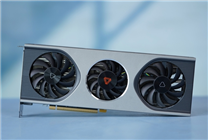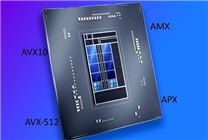Microsoft Restructures Windows Team: A Step Towards AI-Driven Innovation
Summary:
- Microsoft has announced a significant restructuring of its Windows engineering teams under a unified organizational structure.
- This move aims to streamline operations and enhance the focus on AI innovations in Windows.
- Pavan Davuluri, the new president of Windows and Devices, is set to lead the reorganization.
On September 30, Microsoft unveiled a significant realignment of its Windows business, integrating its core engineering team into a singular organizational structure. This strategic move, announced by Pavan Davuluri—who recently ascended to the role of president of Windows and Devices—aims to bolster the company’s focus on advancing its core priorities, particularly in the realm of artificial intelligence (AI).
In an internal memorandum, Davuluri stated, “This adjustment integrates Windows engineering business into a single organization. Integrating the team responsible for Windows clients and servers allows us to concentrate on our central objectives.” This marks a pivotal change for the Windows division, which has seen varied structural organization since the departure of former head Terry Myerson in 2018.
A Shift from Fragmentation to Cohesion
The landscape of Windows engineering has been fragmented for years. Following Myerson’s exit, Microsoft divided the Windows business into two primary portions: one focusing on the core Windows platform within the Azure department, and the other encompassing Windows client-related operations under the newly formed “Experiences & Devices” team. Although former head Panos Panay reclaimed some Windows engineering teams in 2020, the core engineering team remained divided, complicating collaboration and innovation.
Under the new structure, leaders responsible for core operating systems, data intelligence, fundamentals, security, and engineering systems will report directly to Davuluri, culminating in improved oversight and streamlined operations. This will not only enhance internal collaboration but also promote a more agile approach to deploying innovations across the Windows platform.
Maintaining Azure Collaboration
While the restructuring centralizes Windows engineering under one umbrella, it does not eliminate the cooperative dynamics with the Microsoft Azure team entirely. Certain foundational components will continue to be managed by Azure, particularly in areas like storage, networking, and security. Additionally, the core kernel, virtualization, and Linux teams will work closely with Windows to support basic client scenarios, chip adaptation, as well as the Windows Subsystem for Linux (WSL).
This strategic alignment speaks to Microsoft’s integrative vision, ensuring that while Windows operates under a cohesive leadership structure, it can still leverage Azure’s capabilities to enhance the overall operating experience.
Emphasizing AI Innovation
One of the principal motivations behind this reorganization is Microsoft’s growing emphasis on AI-driven innovations within its operating systems. As Davuluri articulated, the restructuring is instrumental in realizing Windows’ vision as an “intelligent proxy operating system” or “Agentic OS.” This forward-thinking perspective aligns with broader industry trends highlighting the importance of AI as a transformative force in technology.
Recently, Microsoft launched the Windows AI Labs project, aimed at testing experimental AI features within Windows 11. A series of AI functionalities have already been integrated into the operating system, such as the Copilot Vision tool and AI-powered setup agent, which exemplify the company’s commitment to pioneering AI capabilities.
Conclusion
As Microsoft cultivates its vision for an AI-centric future, the restructuring of the Windows team marks a significant step forward. By consolidating engineering efforts and focusing on advanced AI implementations, Microsoft is poised to not only improve its product offerings but also solidify its leadership in the tech industry. With Pavan Davuluri steering the ship, the Windows team is set to embark on a promising journey towards innovation and excellence in technology.
This reassessment of organizational structure not only streamlines processes but also paves the way for a more integrated approach to software development, fostering an environment ripe for innovation.









